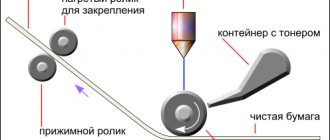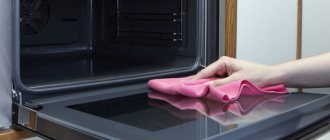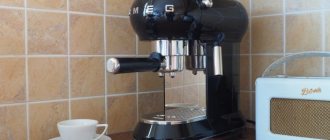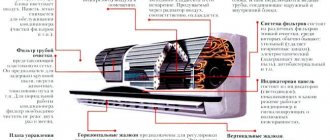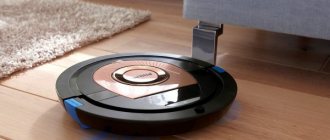LED technology has become quite widespread over the past few years. Not the last of their applications is printing devices, in other words, LED printers and MFPs. Laser presses were not long ago the pinnacle of printing technology, but these days consumers have a wide range of choices. On the one hand, this gives freedom, on the other hand, it gives rise to doubts: which device to take so as not to make a mistake?
LEDs in printing
Comparing laser and LED printing technologies is difficult. It cannot be said that one of them is categorically better than the other. Both options have their advantages. The history of the black and white LED printer began back in 1987, when the first model went on sale. A practical, affordable color device was presented to customers only a decade later. True, the models of the 90s era were not of very high quality, which spoiled the reputation of the technology as a whole.
In many ways, color LED printers have proven to be not very good devices, because users themselves made mistakes when operating the devices. Many used cheap, low-quality toners, others used the machines too actively, exceeding their service life several times over. The high popularity of this type of device in our country in the 90s was explained by its low cost. Now the price of LED printers is higher, but the machines have also become much more reliable.
A little history
The advent of LED printing technology occurred in the 80s of the last century. The development of this technology belongs to the famous Japanese corporation Casio, which was mainly engaged in the production of watches and projectors. In 1987, the very first LED device from another Japanese company, OKI, went on sale. The model was monochrome, that is, it printed only black and white images. A little later, in 1988, the actively developing company OKI introduced a color printing machine, also powered by LEDs. Then this new technology became a kind of offshoot of the laser printing system.
The first LED printer OKI OL400
However, it cannot be said that innovative development was able to advance laser printers - they remained and still remain the most popular and technologically advanced.
LED printers appeared on the Russian printing equipment market only in 1996. It was then that the same OKI company opened its first branch in Moscow and launched the famous OkiPage4W model into mass production. Initially, this model was developed by the Japanese as a printer for the home, but in our country it immediately began to be purchased for offices of small and medium-sized businesses. Initially not designed for large print volumes, OkiPage4W quickly became unusable. As a result, due to the positioning error of this model, the printers received negative reviews and general disapproval from consumers.
In the late 90s and early 2000s, the production of LED printers began to expand: similar devices were launched by such large companies in the electronics world as Xerox, Panasonic, Epson and others. OKI Corporation, however, is considered a leader in the manufacturing of LED printers, confidently strengthening its position and becoming, thanks to the latest developments, a full-fledged competitor to laser printer models.
LED printer Xerox-Phaser-3040
Device specifics
LED and laser printing devices are built on similar operating principles. Inside the machine there is a printing roller, areas of which are sensitive to light. Experts call this part a photodrum. Under the influence of light, a coloring substance sticks to the desired areas of the part, which is then transferred to the paper. Modern LED printers can print on thermal paper, and not just on regular A4 sheets.
When printing, the roller passes over the paper material, pressing on it. This allows you to create a clear trace. The paper with toner is sent to a heating system, where the high temperature allows the ink component to firmly adhere to the material. All this happens in a matter of seconds between pressing the “Print” key and the finished sheet leaving the print tray. By the way, seconds are not a figurative expression. For example, a Xerox LED printer can produce a print in just 4 seconds.
LED printers - operating principle
In general, in terms of design, the LED printer is identical to its laser counterpart. As for the operating principle itself, the same system is used here as in other toner-based printers.
First, paper is fed from the tray using the feed roller. As it rotates, the stack of paper, pressing against the roller, moves towards the next compartment of the printer. The brake pad holds the paper and the top sheet is fed further. It is leveled and smoothed out after deformation when feeding paper. Alignment occurs by gripping the edge of the sheet with a roller, which rotates and feeds the paper evenly.
When paper is fed to the photocylinder, the surface of the photo drum is simultaneously charged using a charging shaft or corotron (a thin thread that transmits a high-voltage electric current, creating a corona charge). Depending on the material of the photocylinder, the charge can be positive or negative, but negative is more often used. Unlike a laser design, where after this stage the laser moves, in LED printers the diodes light up at those points on the tape where the image needs to be applied. Roughly speaking, one diode is one point of the desired image. At such points the negative charge is removed, becoming zero.
The toner is initially negatively charged. It is attracted to the places illuminated by the diodes, where it settles due to electrostatics, creating an image. The built-in microcontroller is responsible for the order in which certain LEDs light up.
After applying toner, it must be fixed to the surface of the paper. Consolidation occurs due to pressure and heating in the next section of the structure - the stove. The paper heats up, and the toner on it melts and penetrates the texture of the paper. At the exit of their stove, it hardens quickly enough, and the result is an image that is resistant to any influences.
LEDs burn out quite rarely, unlike a laser failure, so prejudices about the unreliability and fragility of these printers are completely unfounded.
Is there a difference?
The operation scheme described above is the same for laser and LED printing devices. But if we talk about the differences between these types of machines, then you should understand the structure of the printing roller, which fixes the toning component on the paper.
A laser printer has a special laser that works through prisms and mirrors. But inside the LED color printer there are numerous LEDs. They “decorate” the shaft along its entire length, which makes the system of prisms and mirrors unnecessary.
Types of LED Printers
Like most other printing devices, LED printers are in turn divided into color and black and white (monochrome). Their descriptions are given below.
But there is another option for such printers. In the past, OKI, which was the first to produce LED printers as described above, developed a dual structure spherical toner for its products. However, spherical toner is now produced by most companies specializing in laser products.
Spherical toner, as the name suggests, is microscopic balls of the same radius. They produce sharper dots than using ground toner, and image transfer is more accurate.
This toner consists of a soft core and a dense shell. When exposed to temperature, the core melts first, and by the time the hard shell melts, the liquid formed from the core enters the paper and deeply permeates its structure.
LED color printers
The printer receives the required color image file (in any available format), the raster processor decomposes the image into 4 available colors: cyan (blue), yellow (yellow), magenta (raspberry) and black (black).
The operating principle of a color printer differs from a monochrome one only in that all 4 photocylinders apply the required color to the paper. As a rule, this is done in 1 pass of paper along the shaft. The output is a color image, after mixing the colors and fixing the toner on the paper in the oven.
Color printing can be done in 2 ways:
- Single-pass printing provides fairly high color printing speeds, slightly faster than multi-pass printing. The printer contains 4 tandem-type printing mechanisms (i.e., arranged in one row), which create a color image in 1 pass of paper. The sheet travels on a transfer belt and passes under each drum, which transfers toner to the paper.
- Multi-pass printing is used in the lowest models, and therefore they are less expensive. The printer contains an intermediate medium onto which, passing along the shaft, an image of its own color is applied. After transferring all 4 images, the image is transferred from the media to paper, just as with monochrome printing. The very first copiers, which made it possible to print images in color, had this type of printing. However, this method has a low printing speed and is very noisy (this is due to the rotating revolver with cartridges).
Color models have the same advantages that simple LED models have over laser ones.
As of today, the most productive LED printer on the market is the OKI C9650, which can print 36 color or 40 black and white pages per minute (A4 format). The maximum allowed number of printed pages is 150 thousand per month.
LED black and white printers
As described earlier, the photo roll (drum) is negatively charged, after which the LEDs remove the charge from the necessary points to which the toner is attracted, creating the contours of the image. The only difference from their color counterparts is that the source file is not decomposed into basic colors.
Monochrome models of LED printers will have a lower price compared to color options, so they are perfect for equipping offices of small, medium, and even large businesses.
The black and white printing speed of these devices is usually close to the printing speed of good network printers, and the cost of black and white printing is almost equal to the cost of printing on a regular black and white printer. Please note that the drum and imaging belt life for multi-pass printers are usually stated for black and white prints. For color printing, the declared resource must be divided by 4.
LED printer: advantages and disadvantages
Printing machines designed using LED technology have a number of important advantages, which is why they are very popular. For example, the units are quite compact. This is explained by the small-sized lighting system, which occupies the bulk of the internal volume of the machine. Moreover, for monochrome units the difference is not too significant, but for color ones you can immediately notice where the printer is with LEDs and where with a laser.
Another important difference between a laser printer and an LED printer is the method of forming an image on paper. The LED mechanism is much simpler since there is no need for moving elements. Well, the simpler the design of the machine, the more reliable the device and the longer its service life. However, this only applies to a well-made unit, which is regularly serviced and refilled with good toner. If we talk about service, this is another important difference between a laser printer and an LED printer. A device with LEDs will be cheaper: technical checks and repairs are required less frequently, and they are somewhat simpler.
History of appearance
The technology was developed in the 1980s in Japan to replace expensive laser equipment. A group of engineers came up with the idea of replacing lasers with LED strips. After the invention of the technology, every manufacturer of printing equipment used it in the development of at least one printer model, but such equipment did not gain widespread popularity.
The first printer was created by Casio, then a similar device was released by Oki. In 1988, the same company offered a color model. To expand the range, LED printers were also produced by Kyocera and Panasonic.
In the Russian Federation, the first printers using LED technology appeared in 1996, when an Oki branch opened in Moscow.
Can't do without problems
The advantages and disadvantages of LED printers are points that have long caused debate among buyers. Is it worth spending money on such a car? It is known that LEDs have one significant problem - the brightness of the glow varies quite a lot, and this is difficult to control. The manufacturer usually mentions 15% deviations, but in fact this figure can reach 30%. Much depends on the quality of the lamp. With similar parameters from different companies, LEDs can vary greatly in terms of actual deviation, and this determines the quality of the print. In this regard, OKI LED printers have proven themselves quite well.
To correct deviations, a special system was developed to maintain the quality of prints at a high level. For laser printers it is quite simple, since there is only one light source. But for the sake of their competitors, the engineers had to get wise, because the principle of operation of an LED printer within the framework of printing one sheet of A4 format is the use of more than five thousand light sources. However, the problem was solved, a compensation system was developed - however, it costs much more than a laser one, which also affects the quality of the machine as a whole. The best LED printers are not sold cheaply.
Weaknesses: are there any others?
When considering the advantages and disadvantages of LED printers, we cannot ignore the speed parameter. If we compare the main part of the market models, we can see that the printing speed of a laser device is almost twice as fast as that of an LED device. However, the disadvantage is quite relative. Of course, the best LED printers print faster than the average ones, but for the average person, even a relatively slow machine is unlikely to be a source of inconvenience.
For home use, it is almost impossible to notice the difference. In fact, only office workers, where there is a large paper flow, will pay attention to this, and they have to print hundreds, thousands of pages a day.
For home use
Xerox Phaser 6020
One of the most budget models, it has the ability to print up to 30 thousand pages per month. In the process of work, it uses a standard set of colors from the CMYK palette; the highest print quality on this device is 1200x2400 dpi. The amount of RAM is 128 MB with a processor frequency of 525 MHz. The equipment has a built-in Wi-Fi module, which allows you to connect it to a personal computer or laptop without the use of wires. In addition, you can send documents to this printer from your smartphone. This equipment is designed to work with Microsoft Windows operating systems from version 7 and higher. Unlike other similar equipment, the output here is very rich colors, which even have a slight gloss, which gives the picture greater clarity and realism.
The design is placed in a plastic case, all the parts of which are tightly fitted to each other, there is not even the slightest hint of extraneous creaks or backlash. Plastic with a matte finish is used, so dust will not accumulate on the equipment or fingerprints will remain. The printing speed is not too high - only 12 pages per minute. It is one of the lowest among the models included in our rating, but in terms of print quality the printer is significantly superior to both laser and inkjet products. Office equipment can work with paper whose density ranges from 60 to 220 grams per square meter. One cartridge will be enough for 2000 pages in black and white and 1000 in color.
More: Top 10 best vacuum cleaners for cleaning animal hair
Advantages:
- Excellent print quality – the best you can get at home;
- Quite convenient to use;
- Easily connects to devices via Wi-Fi;
- Works very quietly;
- Reasonable cost of consumables.
Flaws:
- It can be difficult to find drivers for Windows
Xerox Phaser 6020
Brother HL-3140CW
The highest print quality of this equipment is 1200x600 dpi. This indicator is quite enough to obtain clear text and bright color images - drawings, graphs and even presentations. The printing speed is slightly higher than that of the previous model - it is 18 pages per minute, and this figure is completely independent of whether black and white text or a color image is printed. Such indicators are quite sufficient not only for home use, but also for use within a small office. The consumables used here are four multi-component cartridges. Black is rated for approximately 2,500 prints. The CMYK color palette is also used here, which, in addition to black, includes yellow, magenta and cyan. Each of these cartridges has a working life of 1400 pages.
It is worth noting that the developer company has released improved versions of cartridges that allow you to receive up to 2200 images. All of them are refillable, thanks to which you can significantly save on the maintenance of this printer. Another consumable item is a unit equipped with photosensitive rollers - it has a resource of up to 15,000 prints. The waste toner box will need to be replaced after approximately 50,000 pages. The LED strip can also withstand up to 50,000 prints. Almost all elements of the printer can be replaced if necessary, which significantly reduces the cost of using the design. In terms of paper flow control, the technology is not anything remarkable - the tray can hold up to 250 sheets, the receiving niche is designed for 100 prints. Duplex printing is not provided here. You can connect the device to a computer using a standard USB cable that comes with the equipment, or you can use various wireless technologies. The printer is able to work with all operating systems - Microsoft Windows, Apple Mac OS, Linux.
Advantages:
- Elementary setup that even a novice user can handle;
- Cartridges do not have manufacturer's chips, so if they break, analogues can be installed;
- Can work with paper up to 250 gsm;
- Good clarity of color and black and white images;
- Long service life of one cartridge refill.
Flaws:
- A bit pricey.
Brother HL-3140CW
Xerox Phaser 3052NI
Just like the previous equipment, it is well suited for both home and small office, where there is a significant need for high-quality and fast printing. The performance characteristics are quite high, and there is no need for wires due to the presence of a powerful Wi-Fi module. The printing speed is decent - 26 pages per minute, and this figure is stable, unlike laser printers. Of course, there are more efficient designs, but for a home and small office this figure will be quite enough. This equipment can make up to 30 thousand copies per month. The only similarity with laser printers is the need for preheating before starting work, but this process takes much less time - only 14 seconds.
The printer consumes a minimum of electricity, for example, when in standby mode, it will consume only 2 W per hour, thanks to this it is one of the most economical in this segment. The body, like most products of this brand, is made of matte plastic, painted white and rich blue. This allows the product to fit organically into any interior. The build quality is excellent - not a single user has any complaints about it.
Advantages:
- High printing speed;
- Excellent reliability;
- Good workmanship.
Flaws:
- Only black and white printing is provided, there is no color module.
Xerox Phaser 3052NI
OKI C532dn
One of the most productive products from the Japanese company OKI allows you to receive up to 60 thousand prints per month - largely thanks to this factor, the model took first place in its segment of the best LED printers. The memory module has a decent capacity – 1 GB. This allows the device to work with a large number of documents of various formats at once. The print resolution is 1200x1200 dpi with a color printing speed of 30 pages per minute. This allows you to use such a printer not only at home, but also in light and medium busy offices. There is an original Private Print confidential printing function; documents can be sent to this printer through mobile devices - smartphones, phones, tablets and other similar gadgets.
The device supports Gigabit Ethernet, thanks to the use of this technology, even large amounts of data can be quickly transmitted over wireless networks. The printer is universal in terms of supporting paper formats - from A6 to sheets 1320 mm long. It is capable of working with paper of various weights, which can reach 220 gsm. m. The standard capacity of the loading capacity is 250 sheets, but if necessary, you can connect two more paper trays, due to which this figure increases to 1400 sheets. In addition, there is a so-called multi-purpose tray, which will recognize the type of paper in an automatic format. This printer supports duplex printing technology, which will be very useful in an office environment.
More: Multicooker Hyundai HYMC-1611 – full review of the multicooker
Advantages:
- Quite a powerful device;
- High print quality;
- Long service life;
- Supports various paper formats and densities;
- Possibility of increasing the volume of the feed tray.
Flaws:
- Consumes quite a lot of electricity;
- It takes a relatively long time to warm up – it takes about 30 seconds.
OKI C532dn
Is the picture good?
Others, studying the advantages and disadvantages of LED printers, doubt which column to include image quality. The fact is that the use of LEDs allows you to achieve higher saturation. This is achieved through elementary points. In laser printers, a similar method is also used, but there is an alternative option for shifting the points. It is not available in LEDs, since all light sources have a clear, rigid mount.
The operating principle of an LED printer explains the main problems with the image obtained when printing. For example, individual LEDs cannot be focused as desired. The individual light source is very small, and this limits the quality of the resulting image.
What is an LED printer and how it works
The operating principle of LED printers is similar to laser printing. The sheet enters the device thanks to a special roller that “grabs” the sheets one at a time, preventing them from getting wrinkled. Inside the device there is a photo shaft (photographic roller), which is responsible for the voltage inside the equipment. With the help of a special LED line (it contains up to several thousand LEDs), light is transmitted to the photographic roller. And an electric current arises.
The primary image arrives on the paper. Then, under the influence of high temperature, the picture is converted into the required image, which is printed by the user.
LED printers differ from laser devices only in the light source. So, in laser devices these are lasers, in LED devices, respectively, LEDs.
Advantages of LEDs
The pros and cons of LED devices are similar to the pros and cons of laser printers.
Thus, LED printers have the following advantages:
- Compactness – the devices are small compared to other types of printers (compared to inkjet or matrix);
- High printing speed – a large stack of documents will be printed faster than, for example, on inkjet printers;
- Silence – the devices do not emit disturbing sounds, are practically silent, and do not interfere with the activities of workers;
- Cleaning is easier than with inkjet printers - the toner does not stain and does not contaminate the device;
- Reliability and durability – LED strip has a long operating time;
- High quality of the resulting image;
- During operation, substances harmful to human life (such as ozone) are not released;
LED printer advantages and disadvantages allow the device to rise higher in the ranking of printing equipment.
Disadvantages of LEDs
Disadvantages of LED printing:
- The purchase of equipment and its further maintenance are more expensive;
- Cartridges cost 1.5-2 times more, but last longer;
- LED color printers are expensive (yes, the image quality is significantly higher, but the price is noticeably high even for the country’s middle class);
- LED MFPs are at an early stage of distribution, so the number of models available for purchase is relatively small;
There's a place everywhere
LED printing machines are used very widely these days. These are found in offices and at home, and are used both where you need to print a lot of documents, and where you only have to print a page or two per month. They are economical, inexpensive and accessible to the general public. Most of the models on sale are designed for a fairly large volume of printing, which is why they are widespread in workgroups of different sizes - from very small to large.
One of the important advantages of LED printing is the lack of influence on oxygen molecules, which competitors cannot boast of. During operation, the machine does not produce ozone molecules, due to which it is considered safe and recommended for home use even for families with small children. It is acceptable to use such printing machines in various institutions - medical, working with children and social.
Printers for large companies
OKI C712dn
It is a fairly powerful network product designed for active use within an office designed for 15-20 people. The printer has the ability to carry out high-quality printing of fairly large volumes, and paper density can reach 280 g/m2. m, operating speed is 36 sheets per minute. You can use only black and white printing; color cartridges will not waste their resources. The cost of one color print (taking into account that the photodrum will also gradually exhaust its resource) is 1.46 rubles; in terms of black and white copies, the situation is even better - one page will cost only 56 kopecks. This allows you to use the printer even for printing purposes: to make business cards, various kinds of booklets, postcards, calendars, and so on.
More: Robot vacuum cleaner Neatsvor X520 – full review of a vacuum cleaner with a gyroscope
If the loads placed on this equipment are quite large, and it has to interact with significant amounts of data, then there is a slot for connecting a memory card up to 16 GB. If necessary, you can refill the cartridges yourself - there is nothing complicated in this process; toners from the manufacturer are available for sale. The design has a standard set of modules for wired and remote operation; drivers are installed automatically, without user intervention.
Advantages:
- Very convenient and functional office equipment;
- Allows you to receive large volumes of printed products;
- Good value for money;
- High-quality assembly, without creaks or backlashes.
Flaws:
- Some users say that the product is too large.
OKI C712dn
Ricoh SP 450DN
It has a body made of light plastic with a matte finish. It is quite durable and resists various types of damage and physical impacts. There is a dark insert that highlights the four-line LCD display, and there are also several mechanical control buttons. The build quality is quite high - all elements of the case are reliably fitted to each other, the gaps between them are practically indistinguishable, there are no creaks or backlashes. The lower paper tray has a very convenient handle. There are also special handles on the sides to make it easy to move the printer from one place to another. The design has a special bypass tray that allows you to apply permanent images to transparent films, cards, cardboard, envelopes and other products. The capacity of this tray can reach up to one hundred sheets, depending on the material used.
The set of interfaces here is quite large. The printer can be connected to a personal computer via a regular cable or integrated into an office network. Wireless connection via Wi-Fi module is also present. If you use the printer for network work, the function of printing images and documents from mobile devices - smartphones or tablets - becomes available. The drivers are installed independently, the user does not have to do anything for this. The printer has a fairly fast response. It has a powerful processor and 512 MB of RAM, which can be increased up to 1 GB if necessary. It is also possible to connect a flash drive or hard drive with a capacity of up to 320 GB.
Advantages:
- High productivity, which is important for large offices;
- It can be used by up to 4 people at the same time;
- Quite acceptable overall dimensions;
- The product is easy to operate and also has a small liquid crystal display;
- Excellent build quality%
- Support for working with mobile devices.
Flaws:
- The display diagonal could have been larger.
Ricoh SP 450DN
1. Xerox VersaLink C7000N
It is produced on the basis of the latest ConnectKey technology, thanks to which standard office equipment turns into a full-fledged assistant and assistant, which almost fully meets the requirements of fairly large organizations. The printing speed for both black and white documents and color images is the same - it is up to 35 pages per minute, and the resolution is very high - 1200x2400 dpi. This printer provides the ability to transmit and receive data from various cloud services such as Google Drive, Microsoft OneDrive, Dropbox and many others. This makes both office and remote work much easier.
On the front side there is a 5-inch diagonal LCD touch screen. This allows you to use the printer as easily as using a regular smartphone or tablet. The interface can be customized to suit specific work environments and individual user requirements. The product has a driver installation wizard that allows you to complete this process completely automatically, and it will also configure account and network settings. This equipment is quite powerful; the printer can even work with A3 format - in this case, the printing speed is 19 sheets per minute. Not every laser printer can boast of such indicators. The performance of the equipment is ensured largely by a powerful processor with a clock frequency of 1050 MHz and 2 GB of memory. The printing resolution is also quite high - 1200x2400 dpi, the printer can produce up to 153 thousand copies per month, there is a booklet maker that allows you to produce multi-page booklets and even magazines.
Advantages:
- It will be a real godsend for companies for which high speed of work is very important;
- Can print on fairly thick media - postcards, envelopes, and so on;
- The interface is very simple - even an inexperienced user can understand it;
- The cartridge has a long resource - up to 6000 copies.
Flaws:
- Quite a large model;
- Expensive.
Xerox VersaLink C7000N
Specifics of technology
It was already stated above that laser and LED printing machines have much in common. This is due to similar basic principles, while the difference is explained by the specifics of the design. The machines take up little space, operate quietly and rarely break down.
During operation, LEDs quickly illuminate the desired areas of the field using reliable technical solutions. Due to this, printing via LEDs has become efficient, economical, and attractive. The cost per print is very low, the machine is easy to use, and there is no need for maintenance.
How it all began?
LED printers first appeared on sale in 1987. The pioneer in the market was OKI. Since 1998, machines that print color images have been available for sale. The manufacturer is still successfully operating in this market, producing machines for black-and-white and color printing. The organization's main area of specialization is single-pass tandem printing. Its peculiarity is the minimum time for one print.
Single-pass technology means that one sheet passes alternately through 4 printing mechanisms, each responsible for its own section of the CMYK color gamut. The mechanisms have their own light sources, thanks to which the shades are transmitted as accurately as possible. The color print produced in the output tray is formed in one pass of paper through the printing roller. But if you have to print a black and white sheet, then the three drums move a little to the side, and the sheet passes them without losing a split second.
Quality Improvement: It's Possible
There are manufacturers who supply models with unique proprietary improvements. The pioneer in this field is the same company that first released the LED printer - OKI. They also developed a special high-quality toner. Its use makes prints high-quality, clear, and shiny. Gloss is guaranteed even when the printing material is simple office paper.
This manufacturer provides a lifetime warranty on all of its LED lines. Machine warranty is a three-year program.
The world is full of competitors
OKI is not the only company excited about working with one of the most promising printing technologies. Printing machines produced by Xerox have also proven themselves well in this area. The company regularly introduces new products that are attractive to those who value the latest technology. The printing machines offered by the manufacturer are of the highest level.
All units supplied to the market by Xerox are distinguished by their speed and the presence of an intelligent mode. In addition, the devices are equipped with an automation system, thanks to which they can independently switch between trays and automatically select the appropriate mode, as well as determine the thickness of loaded office paper. Typically, Xerox machines also keep track of how much paper is left in the tray and alert the user when supplies are low. However, it is worth recognizing that other printing machines from this manufacturer - laser and inkjet - can also do this.
Clarity, accuracy and quality
The use of LED technologies has one important drawback - the low accuracy of dot illumination. The comparison is noticeable if you make identical prints on laser and LED printers at once.
LEDs are more suitable for printing documents, although they are also good when you need to print photographs and pictures. However, such machines should be used only for amateur photographs, otherwise the quality will be disappointing. LED printers benefit from high print speed and fairly good quality.
LEDs: it's affordable!
If we talk about the main advantages of LED printers, the first thing that is usually mentioned is cost. The difference is more noticeable if you compare the price of color copies: LEDs are about half the price. If we talk about monochrome printers, the difference here is not so great, although it is still noticeable. In addition, all LED machines are reliable and rarely break down.
An important feature of printing on an LED printer is the high quality of the print on the edges of the sheet. It is ensured by the immobility of lighting sources. This same immobility is why laser printers print somewhat slower than many LED printers.
What should you pay attention to?
The key feature of the technology we are considering is the presence of LEDs, the dimensions of which, as indicated above, are very small. Due to this, it is possible to adjust the size of the printed dot down to minuscule ones. This technique is indispensable for achieving a smoothing effect. Modern models provide for adjusting the brightness of lighting sources - the parameter is set individually for each LED. This technology affected the quality of prints, significantly improving them.
The difference between an LED printing device and a laser one is the separation of the print drum and the toner cartridge. This allows each component to be replaced individually as it wears out. A cartridge is a cylinder, the main part of the price of which is the cost of the actual coloring material (about 90%). Therefore, there is no point in refilling the cartridge; you can buy a new, legal, high-quality one every time, that is, without damaging the car. Saving on a cartridge leads to rapid failure. Moreover, a manufacturer who discovers that the user refilled the cartridge himself may not accept the machine for warranty service.
Individuality: advantage or disadvantage?
Of course, when it comes to a person, individuality is an important and necessary quality for a full-fledged personality. But this cannot be said about printed sheets of paper. And this leads to another negative quality of LED printers - the inability to print two completely identical sheets using such a machine.
When printing, LED lines are used, consisting of a huge number of light sources. When transmitting an image for printing, recoding is performed, but slight differences in the decoding process are possible, which leads to differences in the images. It is impossible to make two completely identical prints. Although, of course, the difference will be quite small, so you can consider it insignificant and not pay attention to this point. Moreover, laser printers suffer from the same problem.
What is the difference between a laser printer and an LED printer?
In order to choose the most suitable printer, it is worth comparing both types of printing. And the best way to do this is to simultaneously disassemble their device and the principle on which they work.
color led printer
Laser and diode printers consist of the following main components:
- Paper feed unit. There are 2 types of such mechanisms, it depends on what feeding principle is used in the printer - top or bottom.
- Scanning block.
- Cartridge. Consists of 3 parts: Photocylinder; Precharge shaft; Magnetic shaft.
- Charge transfer roller.
- Image fixing unit.
After you press the print button, the printer starts working. It proceeds as follows:
Charging the photo cylinder
An electric charge is uniformly applied to the cylinder. There are 2 ways to transfer it.
- Using a corotron (tight wire). There is a metal mesh between the wire and the drum, which ensures uniform charge transfer. This method was invented earlier, but had a drawback. During charging, ozone was released due to the high voltage. This principle was and is still used on some models of laser printers.
- Using a charging shaft.
The charging shaft made it possible to reduce the charging voltage, which prevented the formation of ozone. However, such a system poses other problems. Since the shaft transmitting the charge is pressed closely against the photocylinder, the machine parts wear out over time due to friction. This method of charge transfer is used on almost all modern printers, regardless of whether they are laser or not.
Depending on the material of which the photocylinder is made, either a positive or a negative charge can be applied. But most often there are printers with a negative charge.
Scanning
This stage is also called overexposure and is the main difference between laser and diode printers.
- The following happens in a laser printer: The laser beam, reflected through a rotating mirror and passing through special lenses, is focused on the photo cylinder. The laser hits only those places on the shaft that will subsequently leave their imprint on the paper. During this procedure, an electrostatic image gradually begins to form on the cylinder, which will be transferred to paper in the following stages.
- In a diode printer, everything is a little simpler: Instead of a laser installation with various mirrors and lenses, its scanning unit has an LED line, which is equal to the length of the shaft. It can contain from 2.5 to 10 thousand diodes. This number depends on the maximum resolution the printer can print. In this system, instead of one light source, several are used at once, which provides more accurate boundaries of the charges of the electrostatic image and results of higher quality.
The image is obtained due to the fact that in the places where the toner will be applied, the charge is reduced or completely absent.
- Applying toner to the photo cylinder. Before the toner is applied to the photo cylinder, it is charged using a magnetic roller. After this, through a special hole, the toner enters the photo cylinder itself. It is fixed only in those places where the roller is not charged in any way, and where there is a charge, the toner particles are repelled. After applying the toner powder, the electrostatic image becomes visible.
- Transfer to paper. During toner transfer, the paper is sandwiched between two rollers: the photocylinder and the transfer roller. The toner on the roller and the roller have opposite charges, so the powder is easily attracted to it when it hits the paper.
- Consolidation. After applying the toner, the paper is sent to a fixing unit or oven, where the powder, under the influence of high temperatures and pressure, is fixed on the paper, forming an image on it.
After going through all these steps, the printer gives you a sheet of paper with a printed image.
